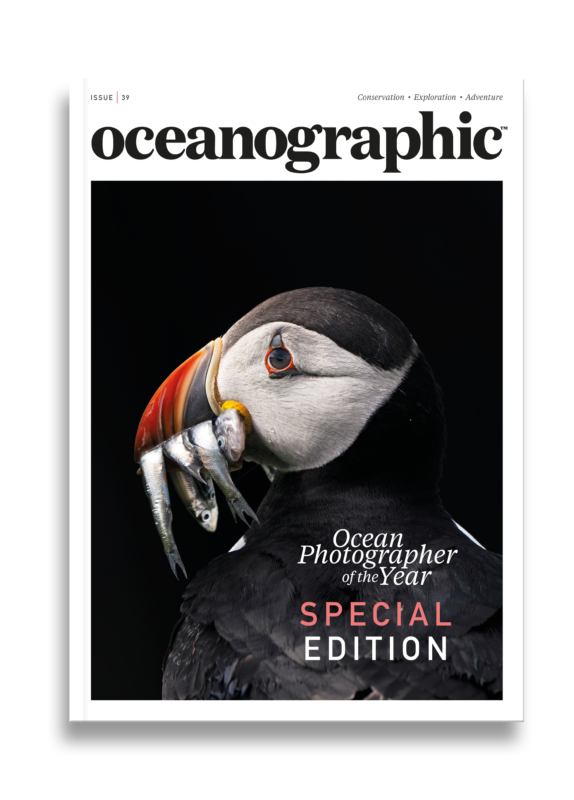New study: Sunscreen's impact on marine life 'needs urgent investigation'
With summer and sunnier weather ahead, new research has highlighted the significant gaps in our understanding of how sunscreens might affect marine ecosystems.

As we slowly gear up for summer and – fingers crossed – warmer temperatures, new research reminds us of the impact that most sunscreens have on marine environments, thereby urging us to opt for safer alternatives.
Most sunscreens – and many personal care products such as shampoos, moisturisers, lipsticks or shower gels and commercial products including rubber, paint, cement and plastics as well – contain chemical compounds that filter out the sun’s ultraviolet (UV) rays, enhance light resistance and prevent photodegradation.
However, due to their widespread use around the globe, researchers have voiced concern over the environmental impact of these chemical compounds. With global sunscreen sales expected to reach $13.64 billion by 2026 and an estimated 6,000 to 14,000 tonnes of UV filters released annually into coral reef zones alone, researchers emphasise the urgent need for more comprehensive studies on their environmental impact.
By reviewing over 110 publications linked with sunscreen, UV filters and their ecotoxicological or environmental impact, new research, titled Ecotoxicological effects of sunscreen derived organic and inorganic UV filters on marine organisms: A critical review, and published in the journal Marine Pollution Bulletin, has found that ‘at least 25% of sunscreen products wash off during sea bathing and a single beach with 1,000 visitors can be subject to more than 35kg of sunscreen deposits per day’.
And the UV filters in sunscreen don’t just enter the marine environment directly through swimming or other water-based recreational activities – they can also enter the ocean by washing towels that have been used to dry sunscreen-coated skin, washing off residue during showering and even in urine.
Anneliese Hodge, lead author of the study and PhD researcher at Plymouth Marine Laboratory and the University of Plymouth, said: “This review indicates that current research has only scratched the surface of understanding how these chemicals can affect marine life. What’s particularly concerning is that these compounds are considered ‘pseudo-persistent pollutants’ due to their continuous introduction into marine environments as well as an overall lack of understanding of how these chemicals then interact with others in the sea.”
She added: “That’s why it’s so important for us to be researching the effects of these compounds on marine life from all geographical regions – temperate and tropical, including the work we are conducting here at PML and the University of Plymouth on UK marine organisms. We really need to understand how these chemicals interact in the marine environment and if they have the potential to bioaccumulate within the food-chain.
“With coastal urbanisation and tourism expected to increase, understanding the full impact of these compounds on marine life is crucial for developing effective environmental protection strategies.”
According to the research, UV filters have been detected in marine environments worldwide, from busy tourist locations to remote areas, such as Antarctica and the Arctic, highlighting the extent of this contamination.
The issue is that traditional sewage and water treatment technologies cannot effectively remove most UV filter compounds. Ozonation, a chemical process that uses ozone (O3) to remove pollutants from water and wastewater, is often used at waste-water treatment plants to degrade organic pollutants, however, this method of disinfection is ineffective in removing the majority of UV filters.
UV filter pollution has recently been linked with agricultural practices too, whereby recycled water from wastewater treatment plants and sludge biosolids are used as soil fertilisers. This practice can result in the spread of UV filter contaminants not only onto crops, but also into agricultural run-off and discharge mechanisms that flow into aquatic environments.
Another source of UV filter contamination in the aquatic environment is through the use of beach showers. A study found that sands around the beach showers of Hanauma Bay, Hawaii were highly contaminated with sunscreen residues, level of which directly correlated with high visitation rates.

“This review highlights the mind-boggling range of sunscreen-derived chemicals that we know are released into coastal marine environments – and demonstrates that our understanding of the effects of these toxic compounds on marine organisms is surprisingly limited,” commented co-author Dr Frances Hopkins, PhD supervisor and Marine Biogeochemist at Plymouth Marine Laboratory.
“Such environments face a range of human-induced stressors, from marine heatwaves and eutrophication to longer term ocean warming and acidification, so it is vital we understand the additional impact of this pervasive chemical pollution on these already stressed ecosystems.”
This literature review identifies critical research gaps that need addressing and offer recommendations to help get a better understanding of the issue with a view to managing these emerging pollutants derived from sunscreens. This can be done, it says, by looking further into the development of inorganic and new-generation synthetic UV filters, increasing research in Northern Europe, Africa, South America, Arctic and Antarctic regions, and many island nations, undertaking long-term studies on chronic exposure effects, using UV lighting in experiments, testing the chemicals’ effect on more species across different life stages, and increasing our understanding of how these chemicals move through marine food chains.
Read the full study here.


"*" indicates required fields
Printed editions
Current issue
Back issues

Back Issues
Issue 39 Special Edition: OPY2024

Back Issues
Issue 37 Wild Alaska: River & Ocean
Enjoy so much more from Oceanographic Magazine by becoming a subscriber.
A range of subscription options are available.







